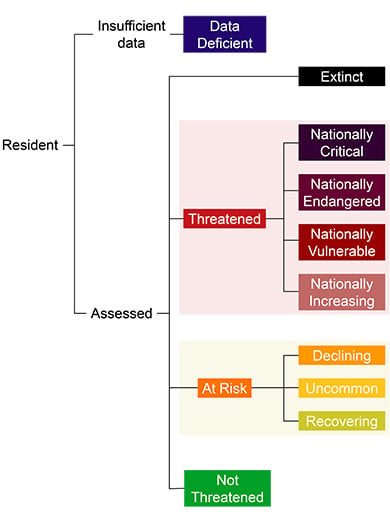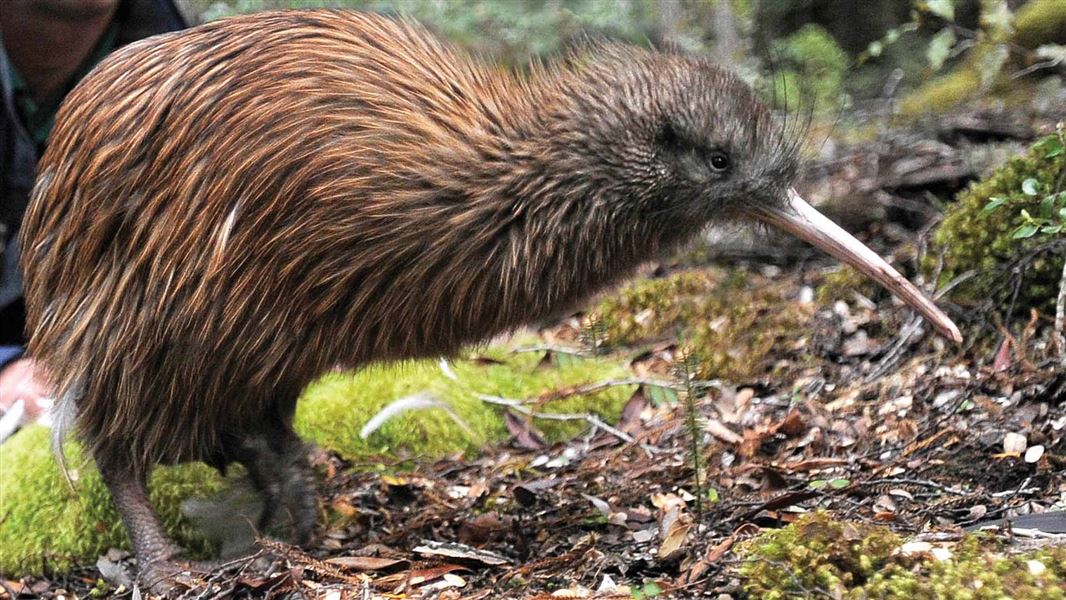How species are assessed

Relationship of NZTCS categories
Image: DOC
Panels of experts from New Zealand’s scientific community determine a species' conservation status using the following assessments:
- What’s the current population size? This can be the number of breeding adults or the area of occupied habitat.
- How much is the population estimated to rise or fall over either the next three generations or 10 years (whichever is longer)?
- If the population is stable, has it declined in the past?
- Is the population state a result of human-induced effects?
Difference between endangered and threatened
The terms 'endangered' and 'threatened' are used interchangeably by different organisations to express similar concepts – species being in danger of becoming extinct.
In the New Zealand Threat Classification System these terms mean two different things.
- The term 'Threatened' is used as an umbrella category that groups conservation statuses with the greatest risk of extinction. For example: small population with greater rate of decline.
- The term 'Endangered' is used to name one specific conservation status – Nationally Endangered.
Threatened
Species assessed as 'Threatened' face the greatest risk of extinction.
- Nationally Critical: most severely threatened, facing an immediate high risk of extinction.
- Nationally Endangered: facing high risk of extinction in the short term.
- Nationally Vulnerable: facing high risk of extinction in the medium term.
- Nationally Increasing: small but increasing population still facing a risk of extinction in the medium term.
At Risk
Species assessed as 'At Risk' aren’t considered 'Threatened', but they could quickly become so if conservation management reduces, if a new threat arises, or declines continue unabated.
- Declining: population declining but still moderately common.
- Recovering: population increasing after previously declining.
- Uncommon: naturally or unnaturally small population and therefore susceptible to harmful influences. Uncommon is the conservation status that combined the 2008 conservation statuses Relict and Naturally Uncommon.
Find out about the classification system and the conservation status of species we've assessed.
Are all 'Threatened' species protected?
No. In many countries, species listed as threatened automatically receive legislative protection from hunting, habitat destruction and other threats. In New Zealand, there’s no direct link between conservation status and legal protection.
Legal protection of species
The legal protection of species is covered in the following acts:
- The Conservation Act 1987 protects plants and animals on public conservation land.
- The Marine Mammals Protection Act 1978 protects all marine mammals.
- The Wildlife Act 1953 protects all terrestrial vertebrate animals except those specifically excluded or limited in one of the schedules to the act. It also protects some invertebrate and marine fish species declared to be animals for the purposes of the act.
- The Native Plants Protection Act 1934 allows for national or regional protection of native plant species by a Warrant issued by the Governor-General. It does not infer any general protection of native plants outside national parks and reserves.
What’s not protected?
Plants, invertebrates and fish are generally not protected except where they occur in national parks or reserves. Exceptions are the few fish and invertebrates deemed to be animals under the Wildlife Act.
What happens next?
Our work includes managing threats and protecting and monitoring species.
